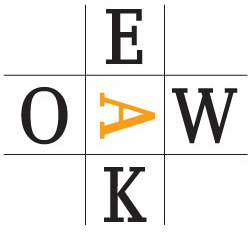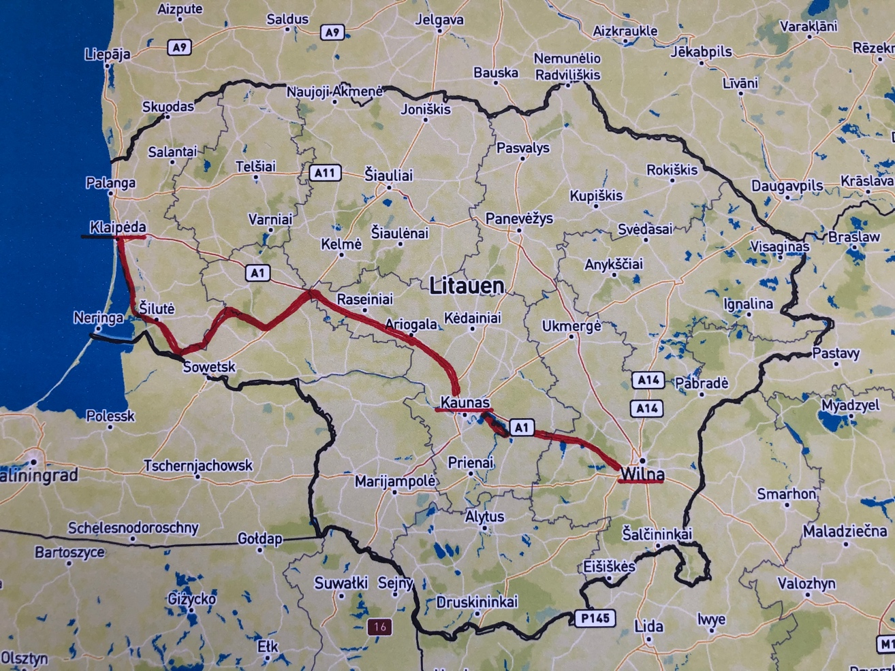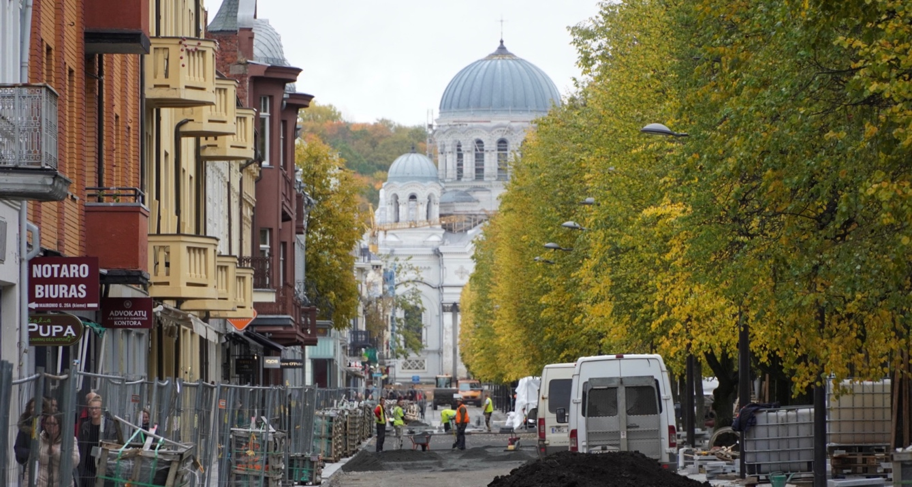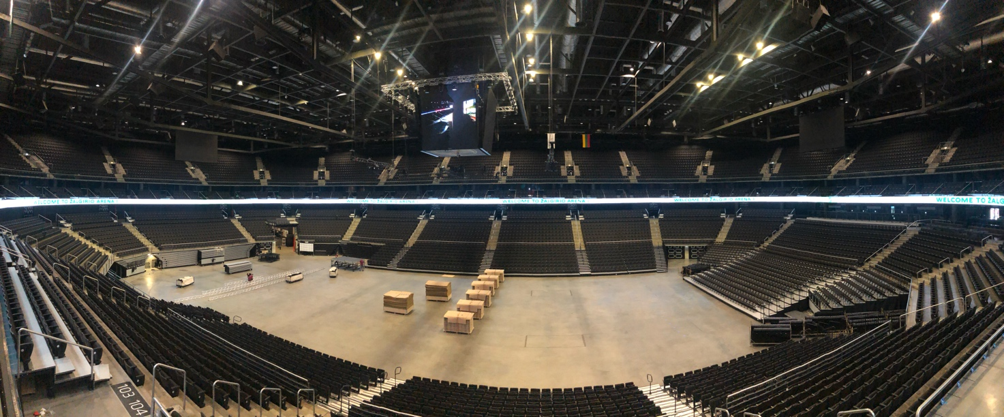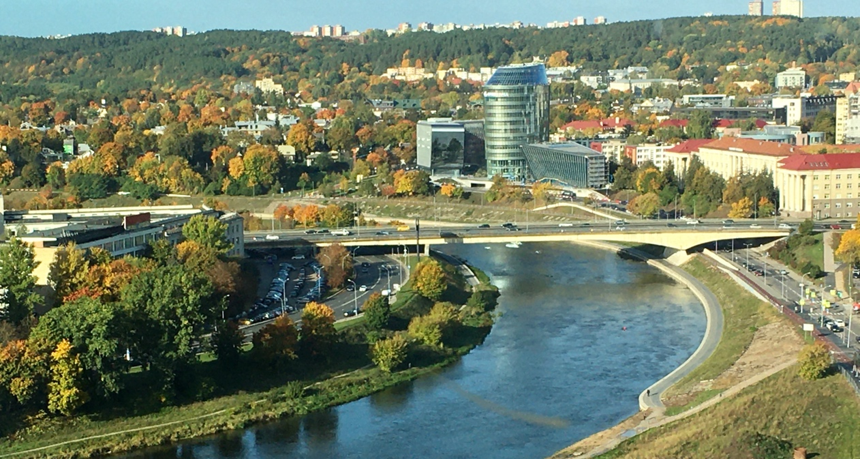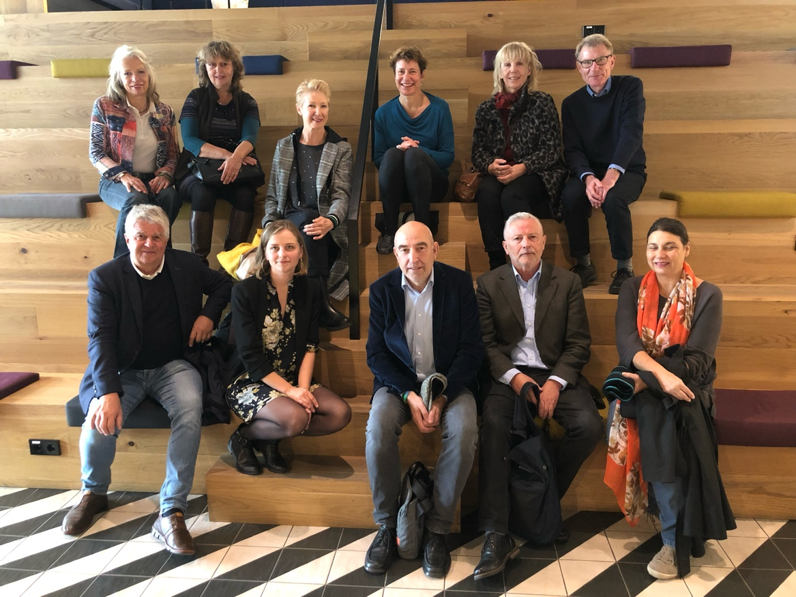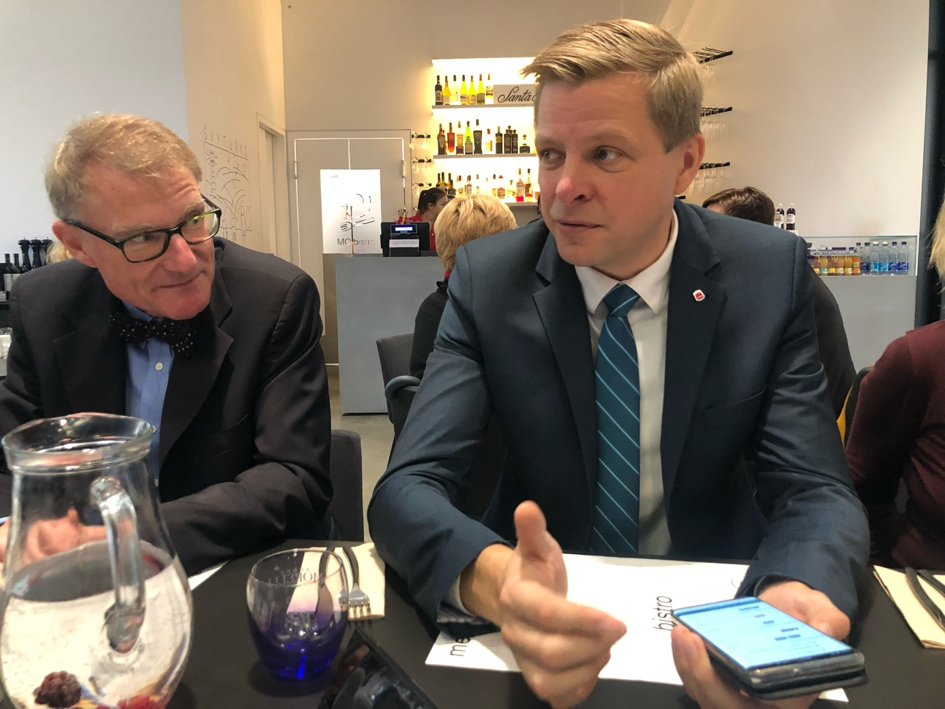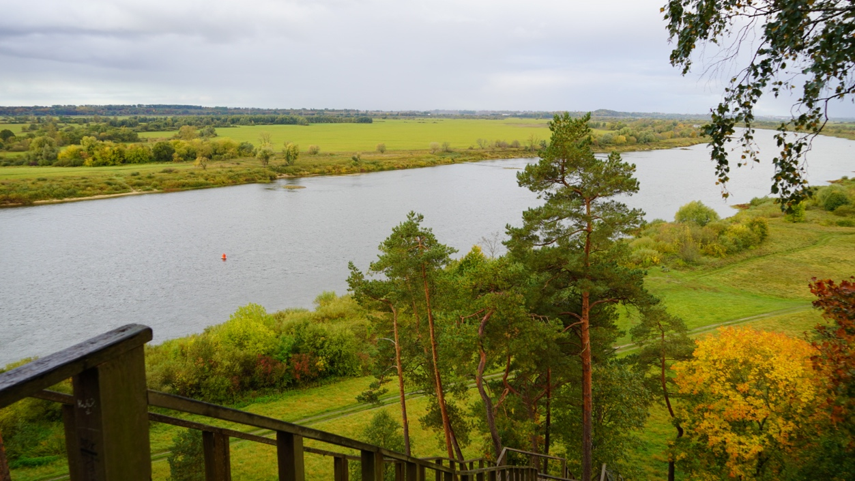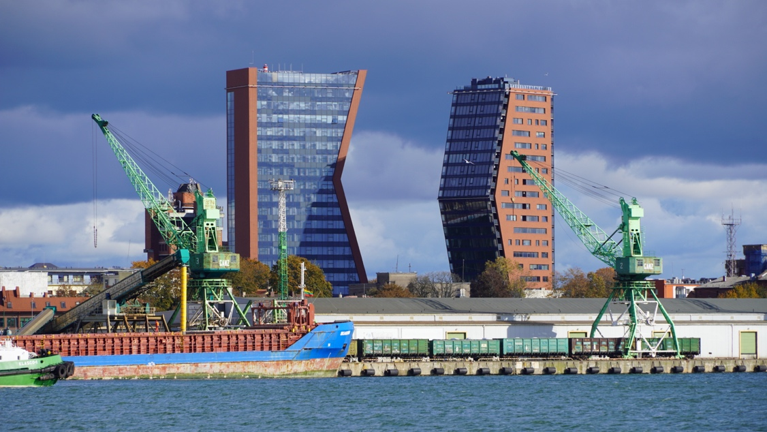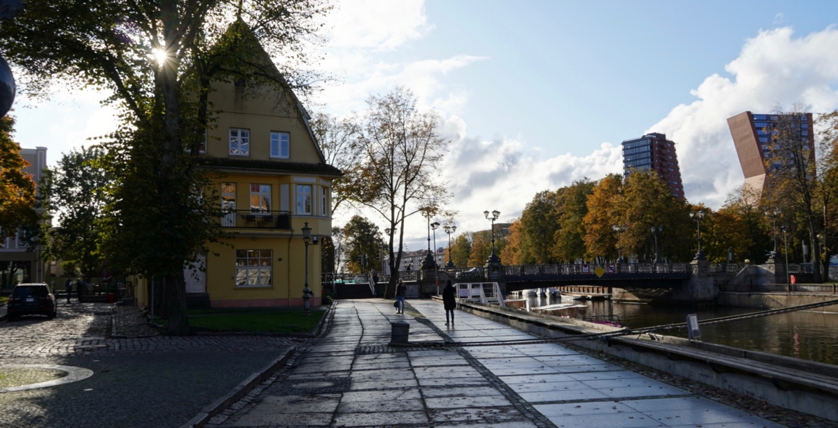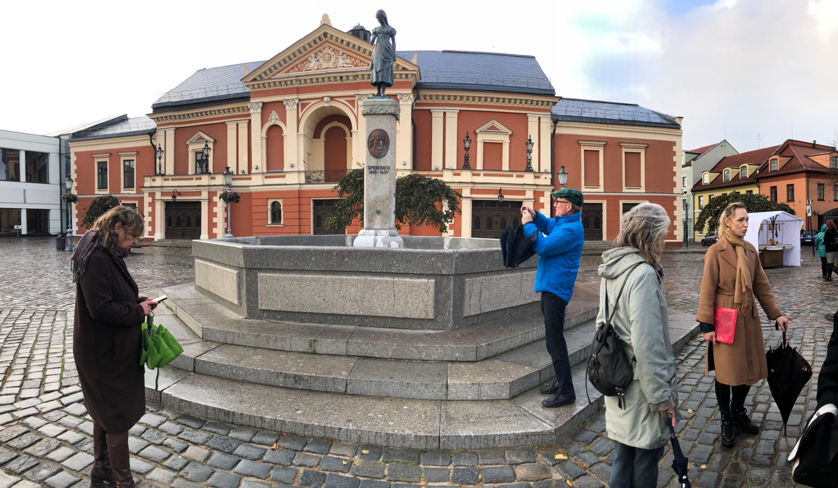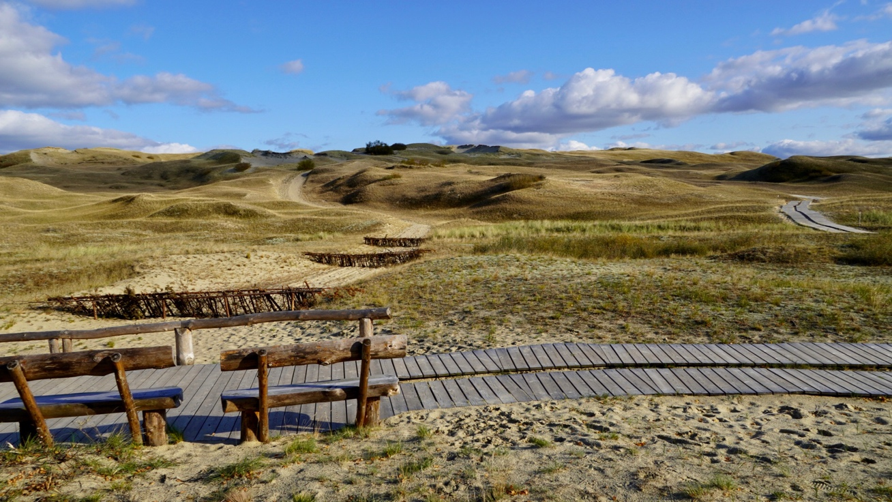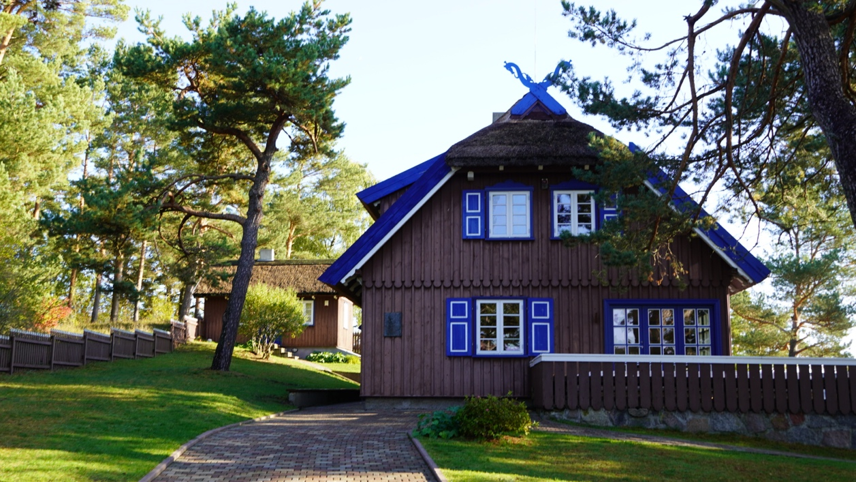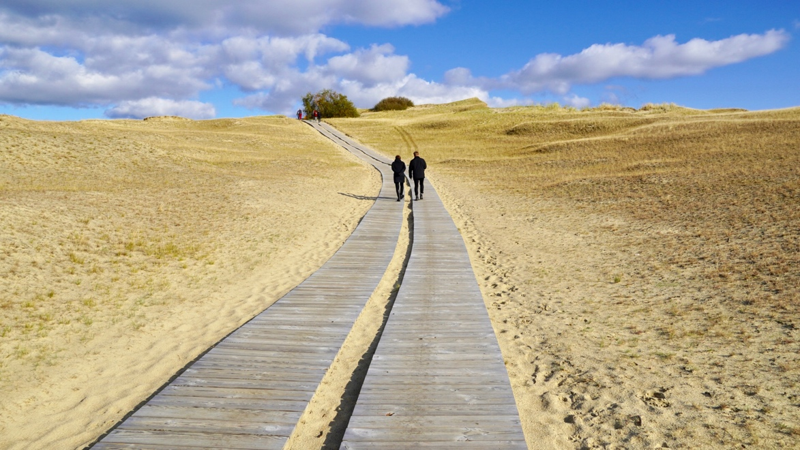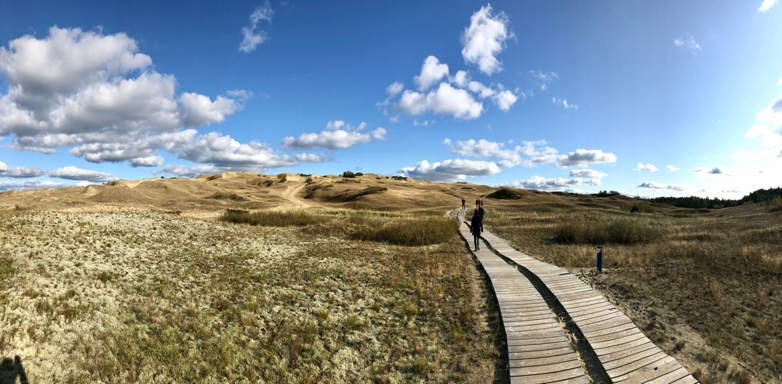Lithuania 2019
Lithuania in Focus: European conflicts, a land of start-ups, and a city for which becoming the “European Capital of Culture 2022” is all about now
The largest country of the three Baltic States, with about 2.8 million inhabitants, was the destination of our annual EOWA research trip in September 2019.
Lithuania cast a spell over our 12 participants from the get-go. It began when our guide Karolis Zemaitis, greeted us at the airport. He made sure we’d see the most and best in and along the way to Vilnius, Kaunas, Klaipeda and the Curonian Spit.
We met with fascinating people from all walks of life – leaving the impression of an unbelievably positive, European-oriented society on all of us.
Kaunas – European Capital of Culture 2022 re-discovers its old glory
The office space in the pedestrian zone radiates modern charm. It is the headquarters of the European Capital of Culture 2022 campaign.
Two years look like a long way to go. And a lot of work. But the staff can do without a desk. A single long white table serves as the creative center for the roughly dozen cultural planners who are to come up with the ideas that will attract Europeans interested in culture to come to Lithuania’s second largest city in 2022.
Spread out before us are freshly printed brochures on the so-called “architecture of hope”, Lithuanian’s Art Deco interwar modern architecture. Almost every month the team is publishing and distributing new information. That’s because the makers are not focusing on what will be in 2022, but what is happening along the road to the cultural mega event.
“The European Capital of Culture – it’s happening now” – that is the motto of this project. The “architecture of hope” of more than 100 years ago has become their leitmotif. Kaunas is trying to step out of the shadow of the Lithuanian capital of Vilnius and make its own mark.
After all, Kaunas was Lithuania’s capital – between the two world wars. Today the city is almost exclusively characterized by “ethnic Lithuanians”, unlike then, when Russian, German, and Jewish minorities added to the city’s flair.
Kaunas lost its importance when Vilnius became the capital of the Soviet republic of Lithuania. Today 35,000 students are enrolled annually. But most of them leave town right after their studies are completed.
A committed team manning City Hall wants to change that: Hardly anyone here is over 40 years old, most are much younger. Just like vice mayor, Mantas Jurgutis, who races through the city council’s to-do list in a 20-minute lecture as if it were a marathon: The network of cycle paths will be expanded the hotel industry will get a boost.
Mantas Jurgutis: “I hope you can feel what we’re doing here.”
We are supposed to “feel” what the young troops are doing here – the facts are
not enough for them.
Outside, rain whips against the windows; inside, numbers, photos and graphics chase over the screen in the mayor’s office.
According to Jurgutis, 6,000 buildings from the era of modernism have already been listed and marked with plaques. “But what good is that, if there is not enough hotel capacity for city tourists yet?”, he asks us.
At least, there are 2,300 beds in the city’s central hospital. That’s because Kaunas is the hospital hotspot of the entire region – the municipality is known for this throughout the country. One of the many goals, is to expand health tourism and make it part of the city’s sustainable tourism.
Jurgutis speaks and promises with enormous speed. The team in the town hall demands and presents. And seems to be successful with it.
Kaunas has one of the largest industrial parks in the country with special conditions for the incoming industries – like the German car light manufacturer Hella which has set up a plant. The country’s most famous self-made man is also at home here: Vladas Lasas. He is UPS‘s general agent in Lithuania, but above all he is a gifted pragmatist who is starting to electrify transportation within his own company, with so-called package cars. Together with Virgin Group magnate Richard Branson, Lasas founded “CarbonWarRoom.com”.
Lasas says of his first visit to Richard Branson, “I flew to see him with Ryanair and returned in his private jet”: He convinced Branson that there was future potential for a CO2-neutral world in small Lithuania and in Kaunas.
The Second World War brought Soviet rule and oppression to Lithuania. That’s how many here see it. And that’s when the once so proud temporary capital was again marginalized. But it has been regaining its posture since the fall of the wall, and more so now with thanks to its basketball stadium, home of the Zalgiris team that attracts fans from all over the region.
They play in the European basketball league and have a close connection to Berlin and its flagship club Alba Berlin. With an annual budget of twelve million euros, Zalgiris is small among the big – “but we fight with passion,” says Paulius Motiejunas, himself a former player and now the club’s young president.
“When in Kaunas, you must see a game”, they all say. They are mega events. “We can’t compete with the atmosphere of a city like Berlin – but we have the fan base.” And they regularly bring the arena to a boil.
Vilnius – Lithuania’s capital with a modern flair
Our other destinations on this trip did not lag behind in positive energy. The capital city of Vilnius was at the forefront.
Our itinerary was put together by Karolis Zemaitis from the local city marketing agency “Go Vilnius”. Karolis was a true miracle maker in fitting in impressive meetings and showing us as many landmarks as possible to make the most of our short visit, creating a feeling that this is a place you’d like to return to and explore further.
Well versed in the history of Lithuania and just as knowledgeable in contemporary topics, Karolis, with his smartphone at hand, always had answers to our endless questions thereby giving us a well-rounded overall picture of the country.
With regard to NATO’s multinational battlegroup stationed in Lithuania as a response to the Russian-European conflict over Ukraine, Sonn sees his term in office under the motto: “Lithuania and Germany: a partnership you can rely on – in a free and united Europe and in overcoming global challenges.”
Germany is the leading NATO nation in Lithuania. It borders on Russia’s immediate external border with the enclave of Königsberg. In the course of this week, Karolis most clearly summarized how important this is for the Lithuanians: “The idea of a Russian attack on the country is omnipresent. “If there were just us few Lithuanians, it wouldn’t impress Moscow,” says Karolis “ with Nato soldiers here from other countries, things are different.”
“For many Lithuanians, the NATO presence is crucial,” says Ambassador Senn, who now resides in the building of a former sub-organization of the Soviet KGB. Every day, Lithuanian authorities count more than 100 cyber attacks. It is important to strengthen the country’s “resilience” against such attacks.
Shortly before our interview, a photo of an alleged German tank of the NATO battlegroup in a Jewish cemetery had caused a stir. The cemetery had been desecrated and it was insinuated by them. A fake photo, it was uncovered by the Lithuanian “Cyber-Centre”. Indeed, the historical consequences of the tyranny of the German Reich are undeniable. In 1939, Vilnius still had a Jewish majority of its population, which was later exterminated by Nazi Germany.
Mayor Remigljus Simasius firmly agrees that this history also belongs to his city. All the more does this liberal mayor want to make his city attractive for the European digital economy.
He proudly presented the city’s open-source app, which combines all mobility providers in one application.
We met him in the bistro of the MO Museum, the most important museum for modern art in the region, which this autumn curated a show dedicated to the upheavals in Europe 30 years ago.
Frank Hofmann
On our bus tour to the city of Klaipeda, we experienced rural Lithuania in its autumnal splendor along the way. We stopped at various points to see the border of the Russian enclave of Kaliningrad on the opposite bank of the Memel River. This is where Schengen and NATO ends.
Klaipeda – Lithuania’s gateway to the world
Klaipeda was founded in 1252 under the German name “Memel”. Today the third largest city in the country is mainly known for its seaport, which remains ice-free all year round and is an important hub for cargo and passenger ships between Lithuania, Scandinavia and Germany.
During the Second World War Klaipeda was literally devastated, but recovered quite quickly. The pretty old town, which was declared a cultural monument in 1969, reminds us of times long past with its narrow cobbled streets and remains of the old Memel castle.
The center of the historic old town is the theater square with its fountain of the figure of the Annie of Tharau, based on a very endearing tale.
The Curonian Spit – a nature reserve with a dreamlike dune landscape
From Klaipeda we took a small ferry to the 98-km-long
Peninsula on the north coast of Samland. Since 1945, the northern 52 km have belonged to Lithuania, and the southern 46 km to Kaliningrad.
Its impressive dune landscapes had already fascinated Thomas Mann, who had a holiday home built there in 1930. Today a cultural center is housed there in his honor.
Just like Thomas Mann, but also we were also enthusiastic about this beautiful scenery complete with forests, dunes and the sea on both sides of the spit.
This unique landscape with its imposing shifting sand dunes, which has been a UNESCO World Heritage Site since 2000, is closely interwoven with the Baltic mythology.
Away from the fine sandy beaches of the Baltic Sea there are centuries-old pine forests where wooden sculptures from Lithuanian folklore guard the paths.
Most of our group returned home from Klaipeda to Kiel by car ferry: a 22-hour mini-cruise bringing us to the end of a fascinating journey to a “newly discovered” great country.
Lithuania, we will return!
Klaus Bergmann
Photos: © EOWA
